Charles Rennie Mackintosh (1868-1928), a cypress wood and brass writing cabinet, formerly green stained, with cut-out stylised foliate hinges, the drawer with conforming handles, the base with two shelves, 159cm high, 96cm wide, 45cm deep Provenance: by descent from the relatives of James Guthrie This writing cabinet was consigned to McTears, Auction House in Glasgow, together with a collection of items, as part of a house clearance, including silver, brassware with 'Guthrie' stamped in bold writing onto two separate chargers, two watercolours and an oil painting by Guthrie. This secretaire and a sideboard, both part of this consignment, were both made from cypress wood and designed by Mackintosh. For similar see Kaplan, Wendy (editor) 'Charles Rennie Mackintosh', pl. 159. opposite p. 233. The original furniture Mackintosh designed for Guthrie & Wells was made from cypress wood and stained green and of simple construction. This is the same with the present lot and one can see in the image that behind the hinges the original green stain is still as vibrant as the day it was applied. The keyhole escutcheons are exactly the same as on the linen press which has candle sconces to each side that Mackintosh designed for John Henderson one of the earliest known surviving pieces he designed. The back treatment of this present lot is the same and has just three wide boards which run from the top right to the floor. The side treatment is also from the top straight to the ground quite typical of Mackintosh but very rare on any other pieces of furniture from the late Victorian period. For this see Kaplan, Wendy (editor) 'Charles Rennie Mackintosh', p. 232, fig 160 and Billcliffe, Roger 'Charles Rennie Mackintosh: The Complete Furniture, Furniture Drawings, & Interior Designs', p.34, fig. 1895.6. The metalwork is identical on some pieces and so very similar on others, see the Billcliffe work above, p. 33, fig. 1895.2 and 1895.3 for washstand and dressing table handles. The hinges on all these pieces are actually hinges as opposed to fake applied plates and the hinged ends are formed identically. On the sideboard that came from the same property, i.e the Guthrie relatives, the hinges are identical and the small detail to the bottom centre of the sideboard is identical to the drawing illustrated in Billcliffe, p. 34, fig. 1897.7. That detail is also on a number of other pieces by Mackintosh (see Billcliffe, as before, p, 36, fig. 1896.1, fig. 1896.2, fig 1896.6 and fig. 1896.8. The form and style of this writing cabinet, undoubtedly in his hand, with the floral brass hinge, which mirrors the fretwork flowers to the sides, is almost identical to the roses that the stylised women are holding on the stencilled decoration he designed for Buchanan Tea Rooms in 1897. For this see Kaplan, Wendy (editor), as before, p. 81, fig. 45 and Billcliffe, as before, p. 40, fig. 1896.11). He also uses a flat top on quite a number of other cabinets and pieces of free standing furniture, again, like the present lot. Taken from an e-mail correspondence on 14/01/09 between Tony Geering and Peter Trowles, MLitt., FRSA, Mackintosh Curator, Archives and Collections Centre, the Glasgow School of Art. 'I think your bureau has all the attributes to link it to a Mackintosh-related piece. The underlying green stain, simple case construction and choice of ironmongery are all strong pointers plus youÆve got the Guthrie provenance'
Charles Rennie Mackintosh (1868-1928), a cypress wood and brass writing cabinet, formerly green stained, with cut-out stylised foliate hinges, the drawer with conforming handles, the base with two shelves, 159cm high, 96cm wide, 45cm deep Provenance: by descent from the relatives of James Guthrie This writing cabinet was consigned to McTears, Auction House in Glasgow, together with a collection of items, as part of a house clearance, including silver, brassware with 'Guthrie' stamped in bold writing onto two separate chargers, two watercolours and an oil painting by Guthrie. This secretaire and a sideboard, both part of this consignment, were both made from cypress wood and designed by Mackintosh. For similar see Kaplan, Wendy (editor) 'Charles Rennie Mackintosh', pl. 159. opposite p. 233. The original furniture Mackintosh designed for Guthrie & Wells was made from cypress wood and stained green and of simple construction. This is the same with the present lot and one can see in the image that behind the hinges the original green stain is still as vibrant as the day it was applied. The keyhole escutcheons are exactly the same as on the linen press which has candle sconces to each side that Mackintosh designed for John Henderson one of the earliest known surviving pieces he designed. The back treatment of this present lot is the same and has just three wide boards which run from the top right to the floor. The side treatment is also from the top straight to the ground quite typical of Mackintosh but very rare on any other pieces of furniture from the late Victorian period. For this see Kaplan, Wendy (editor) 'Charles Rennie Mackintosh', p. 232, fig 160 and Billcliffe, Roger 'Charles Rennie Mackintosh: The Complete Furniture, Furniture Drawings, & Interior Designs', p.34, fig. 1895.6. The metalwork is identical on some pieces and so very similar on others, see the Billcliffe work above, p. 33, fig. 1895.2 and 1895.3 for washstand and dressing table handles. The hinges on all these pieces are actually hinges as opposed to fake applied plates and the hinged ends are formed identically. On the sideboard that came from the same property, i.e the Guthrie relatives, the hinges are identical and the small detail to the bottom centre of the sideboard is identical to the drawing illustrated in Billcliffe, p. 34, fig. 1897.7. That detail is also on a number of other pieces by Mackintosh (see Billcliffe, as before, p, 36, fig. 1896.1, fig. 1896.2, fig 1896.6 and fig. 1896.8. The form and style of this writing cabinet, undoubtedly in his hand, with the floral brass hinge, which mirrors the fretwork flowers to the sides, is almost identical to the roses that the stylised women are holding on the stencilled decoration he designed for Buchanan Tea Rooms in 1897. For this see Kaplan, Wendy (editor), as before, p. 81, fig. 45 and Billcliffe, as before, p. 40, fig. 1896.11). He also uses a flat top on quite a number of other cabinets and pieces of free standing furniture, again, like the present lot. Taken from an e-mail correspondence on 14/01/09 between Tony Geering and Peter Trowles, MLitt., FRSA, Mackintosh Curator, Archives and Collections Centre, the Glasgow School of Art. 'I think your bureau has all the attributes to link it to a Mackintosh-related piece. The underlying green stain, simple case construction and choice of ironmongery are all strong pointers plus youÆve got the Guthrie provenance'
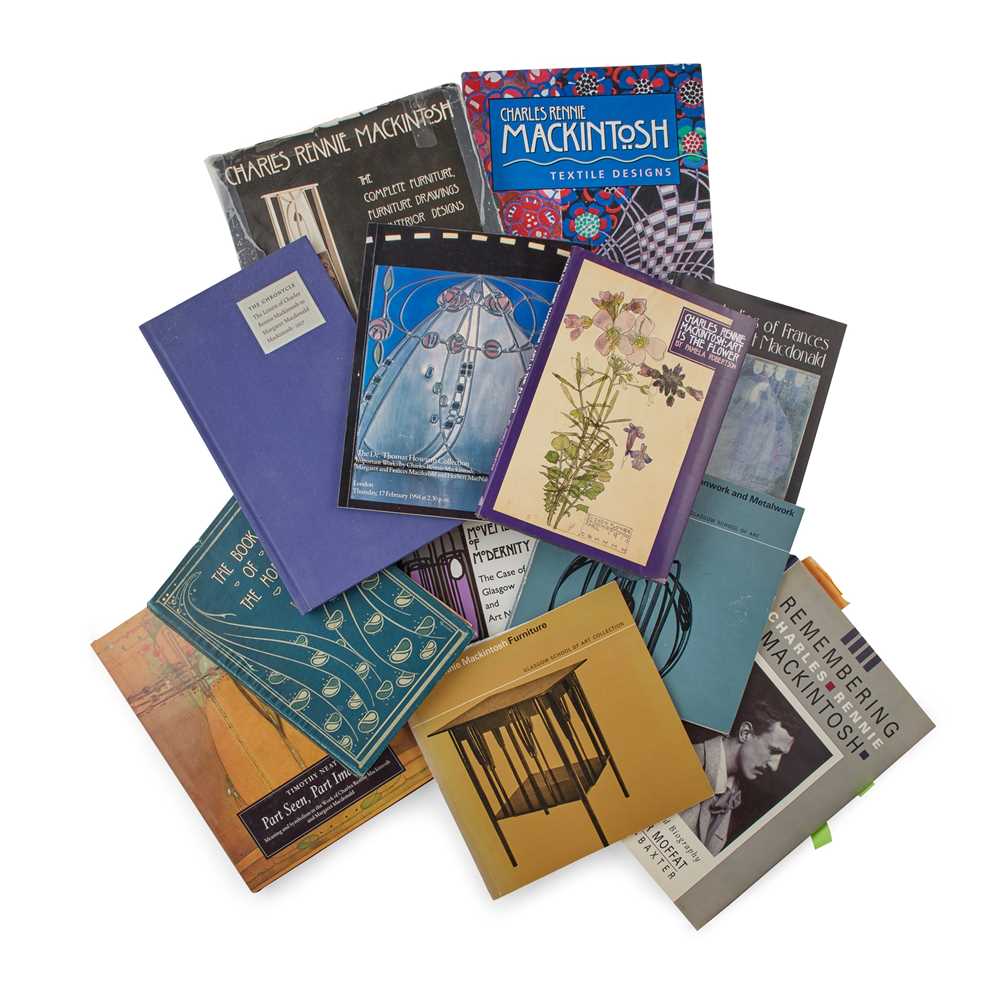

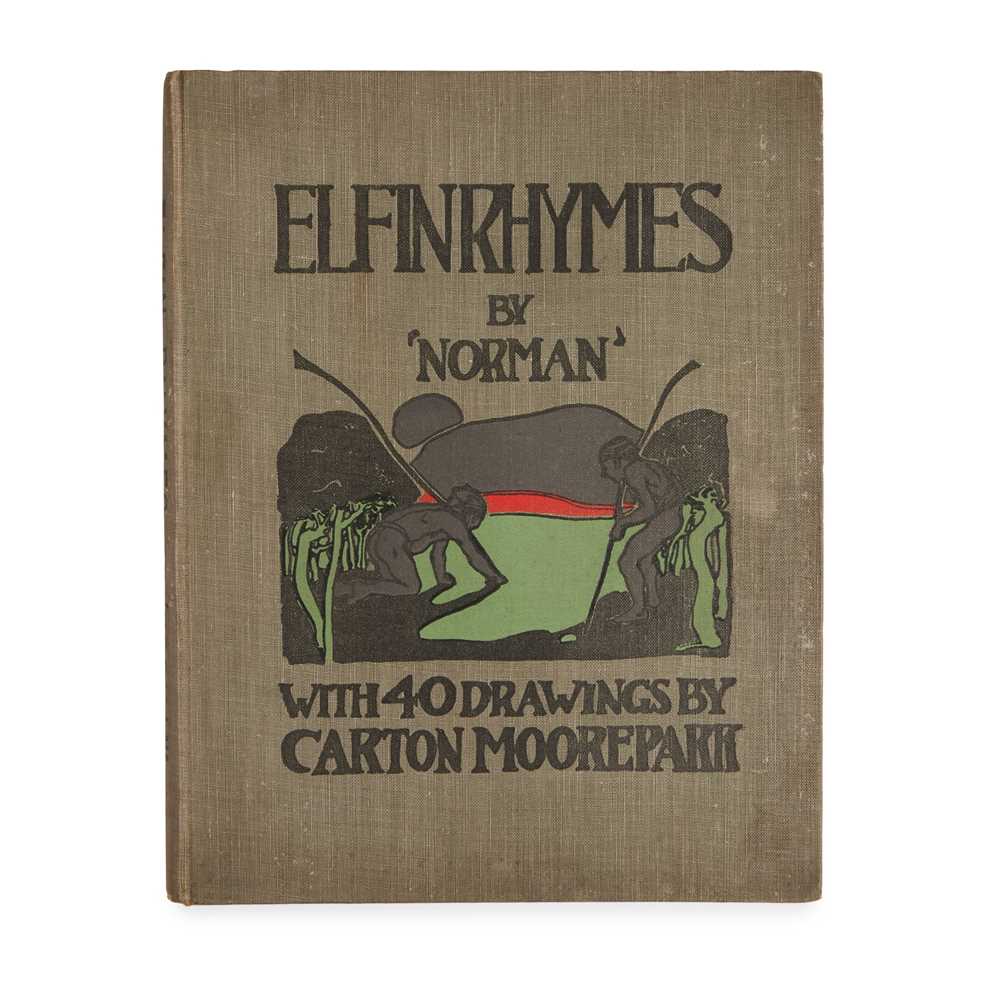
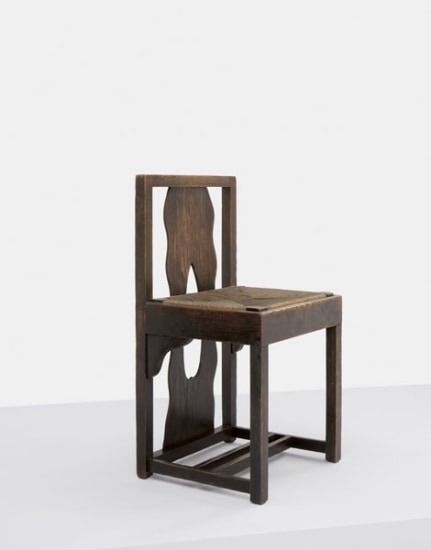
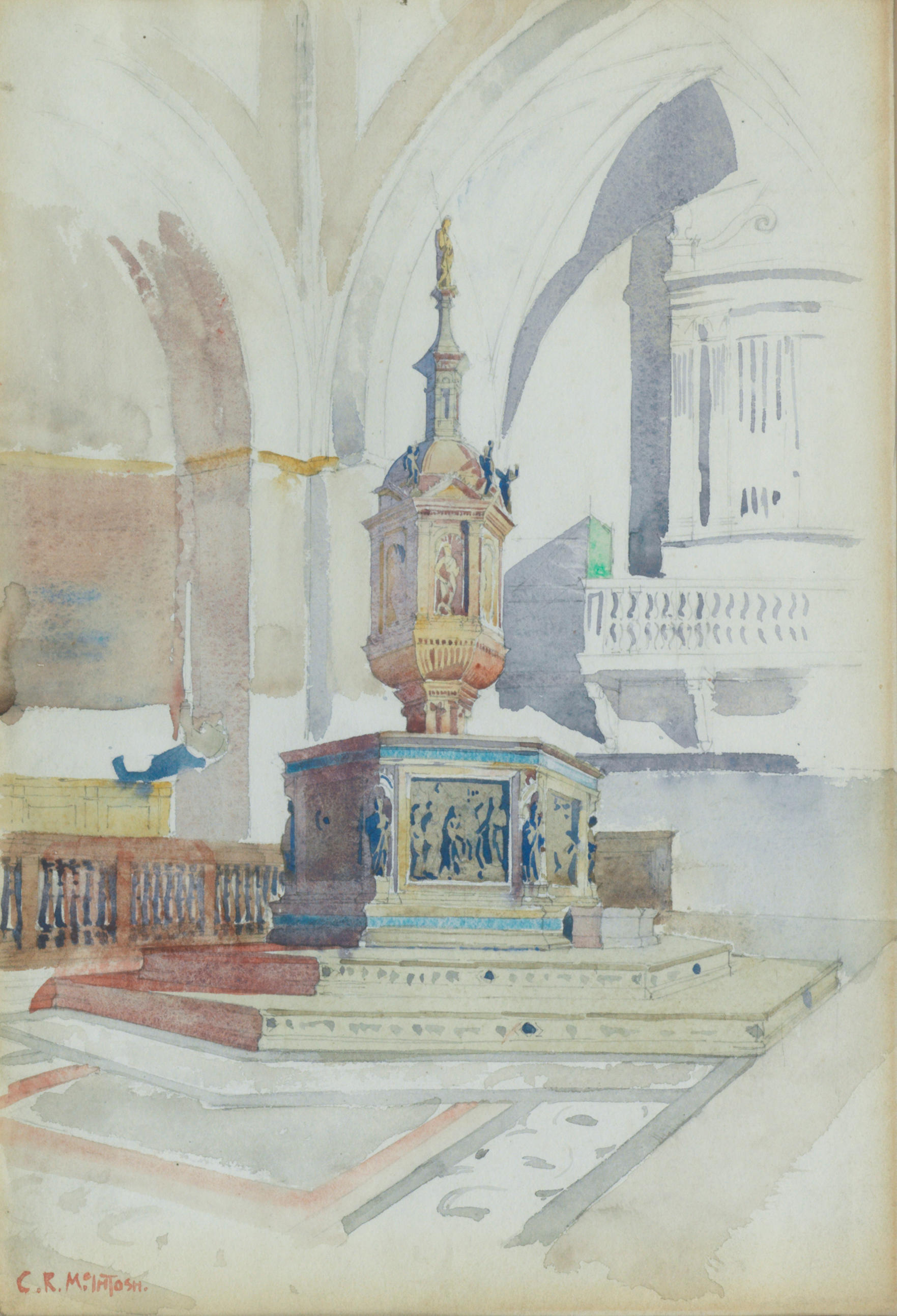

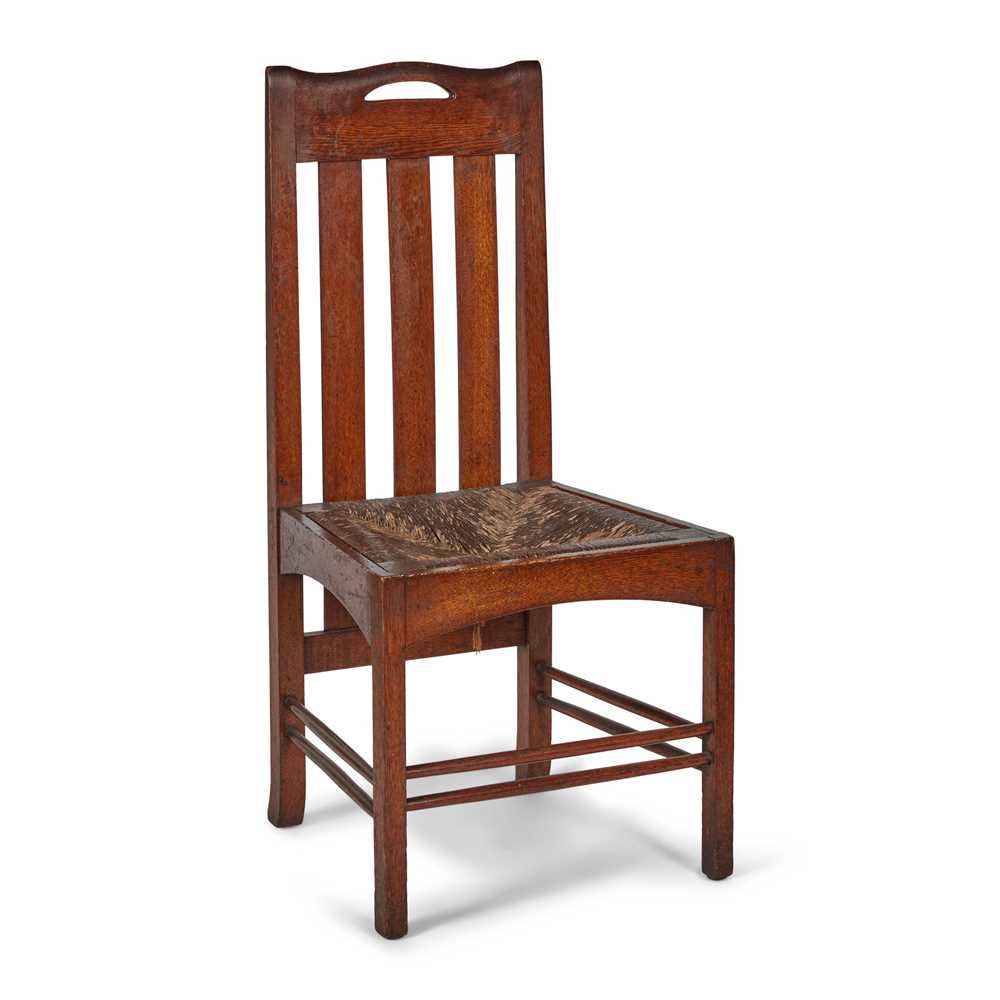








Testen Sie LotSearch und seine Premium-Features 7 Tage - ohne Kosten!
Lassen Sie sich automatisch über neue Objekte in kommenden Auktionen benachrichtigen.
Suchauftrag anlegen